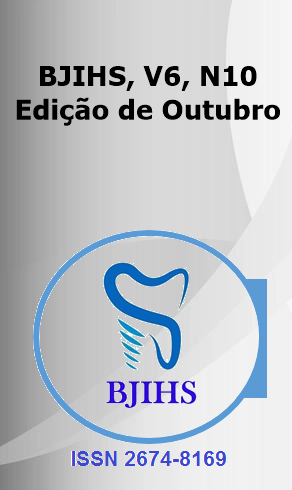Resumo
Este artigo apresenta uma revisão sistemática sobre tratamentos para transtornos de ansiedade na infância e adolescência, com foco na eficácia, segurança e potenciais efeitos colaterais. Foram consultadas diversas bases de dados, resultando em 23 estudos que avaliaram diferentes tipos de tratamento, incluindo terapias psicológicas, medicamentos e intervenções baseadas em exercícios físicos. Os resultados indicam que muitos desses tratamentos são eficazes e seguros para crianças e adolescentes com transtornos de ansiedade, com diferenças entre os tratamentos em relação à eficácia e aos efeitos colaterais. A prevalência de transtornos de ansiedade na infância e adolescência também foi abordada na revisão, com dados que mostram uma variação de acordo com o tipo de transtorno e com a região estudada. Os sintomas dos transtornos de ansiedade podem se apresentar de formas diferentes em cada indivíduo, o que pode dificultar o diagnóstico. Portanto, é essencial que os profissionais de saúde estejam capacitados para identificar os transtornos de ansiedade em crianças e adolescentes e oferecer o tratamento adequado. Além disso, mais pesquisas são necessárias para aprimorar o conhecimento sobre o tema e desenvolver intervenções cada vez mais eficazes.
Referências
AMERICAN PSYCHIATRIC ASSOCIATION. Diagnostic and statistical manual of mental disorders (5th ed.). Arlington, VA: American Psychiatric Publishing. 2013.
BOOTH, A.; PAPAIOANNOU, D.; SUTTON, A. Systematic approaches to a successful literature review. London: Sage Publications. 2016.
CHAVIRA, D. A., STEIN, M. B., & MALCARNE, V. L. (2002). Scrutinizing the
relationship between shyness and social phobia. Journal of Anxiety Disorders, 16(6), 585-598. https://doi.org/10.1016/S0887-6185(02)00132-6
COOPER, H. M. The integrative research review: A systematic approach. Beverly Hills: Sage. 1984.
COSTELLO, E. J., EGGER, H. L., & ANGOLD, A. (2005). 10-year research update review: The epidemiology of child and adolescent psychiatric disorders: I. Methods and public health burden. Journal of the American Academy of Child & Adolescent Psychiatry, 44(10), 972-986. https://doi.org/10.1097/01.chi.0000172558.41074.09.
ESSAU, C. A., CONRADT, J., & PETERMANN, F. Prevalence of anxiety disorders among children and adolescents. In P. Muris, J. H. Ollendick, & T. H. Ollendick (Eds.), Fear and anxiety in children and adolescents: Research and treatment (2nd ed., pp. 3- 27). New York: Springer. 2014.
FINK, A. Conducting research literature reviews: From the internet to paper. Thousand Oaks: Sage Publications. 2013.
GINSBURG, G. S., & SCHLOSSBERG, M. C. Family-based treatment of childhood anxiety disorders. International Review of Psychiatry, 14(2), 143-154. 2002.
GREEN, B. N.; JOHNSON, C. D.; ADAMS, A. Writing narrative literature reviews for peer-reviewed journals: Secrets of the trade. Journal of Chiropractic Medicine, 5(3), 101-117. 2006.
KESSLER, R. C., BERGLUND, P., DEMLER, O., JIN, R., MERIKANGAS, K. R., &
WALTERS, E. E. Lifetime prevalence and age-of-onset distributions of DSM-IV
disorders in the National Comorbidity Survey Replication. Archives of General Psychiatry, 62(6), 593-602. 2012.
MA, X., YUE, Z. Q., GONG, Z. Q., ZHANG, H., DUAN, N. Y., SHI, Y. T., … LI, Y. F.
The prevalence of anxiety and depression in Chinese children and adolescents: A meta-analysis. PLoS ONE, 14(8), e0221543. 2019.
MERIKANGAS, K. R., HE, J. P., BRODY, D., FISCHER, E. H., BOURDON, K.,
KORETZ, D. S., … RUMSEY, J. (2010). Prevalence and treatment of mental disorders among US children in the 2001–2004 NHANES. PEDIATRICS, 125(1), 75–81. https://doi.org/10.1542/peds.2008-2598.
MURIS, P., MERCKELBACH, H., SCHMIDT, H., & MAYER, B. (1999). The revised
version of the Screen for Child Anxiety Related Emotional Disorders (SCARED-R): Treatment sensitivity in an early intervention trial for childhood anxiety disorders. British Journal of Clinical Psychology, 38(1), 45-54.
https://doi.org/10.1348/014466599162593
PETTICREW, M.; ROBERTS, H. Systematic reviews in the social sciences: A practical guide. Malden, MA: Blackwell Publishing. 2006.
POLANCZYK, G. V., SALUM, G. A., SUGAYA, L. S., CAYE, A., & ROHDE, L. A.
Annual research review: A meta-analysis of the worldwide prevalence of mental disorders in children and adolescents. Journal of Child Psychology and Psychiatry, 56(3), 345-365. 2015.
STORCH, E. A., MERLO, L. J., LEHMANN, H. M., GEFFKEN, G. R., & JACOBS, M.
(2008). Assessment of functional impairment in children and adolescents with obsessive-compulsive disorder: Normative data and clinical implications. JOURNAL OF CLINICAL CHILD AND ADOLESCENT PSYCHOLOGY, 37(4), 819–831.
https://doi.org/10.1080/15374410802359819
THAPAR, A. et al. Depression in adolescence. The Lancet, v. 379, n. 9820, p. 1056- 1067, 2012.
WALKUP, J. T., ALBANO, A. M., PINCUS, D. B., SAUER, E. M., & LAST, C. G. (2008).
Practice parameter for the assessment and treatment of children and adolescents with anxiety disorders. JOURNAL OF THE AMERICAN ACADEMY OF CHILD AND ADOLESCENT PSYCHIATRY, 47(3), 385–405.
https://doi.org/10.1097/CHI.0b013e318160980f
WORLD HEALTH ORGANIZATION. ICD-11: International classification of diseases 11th revision. Geneva, Switzerland: World Health Organization. 2019.

Este trabalho está licenciado sob uma licença Creative Commons Attribution 4.0 International License.
Copyright (c) 2024 Vitor Hugo Gomes Araújo , Lara Vasconcelos Normando, Aristone José Pacheco Marinho
